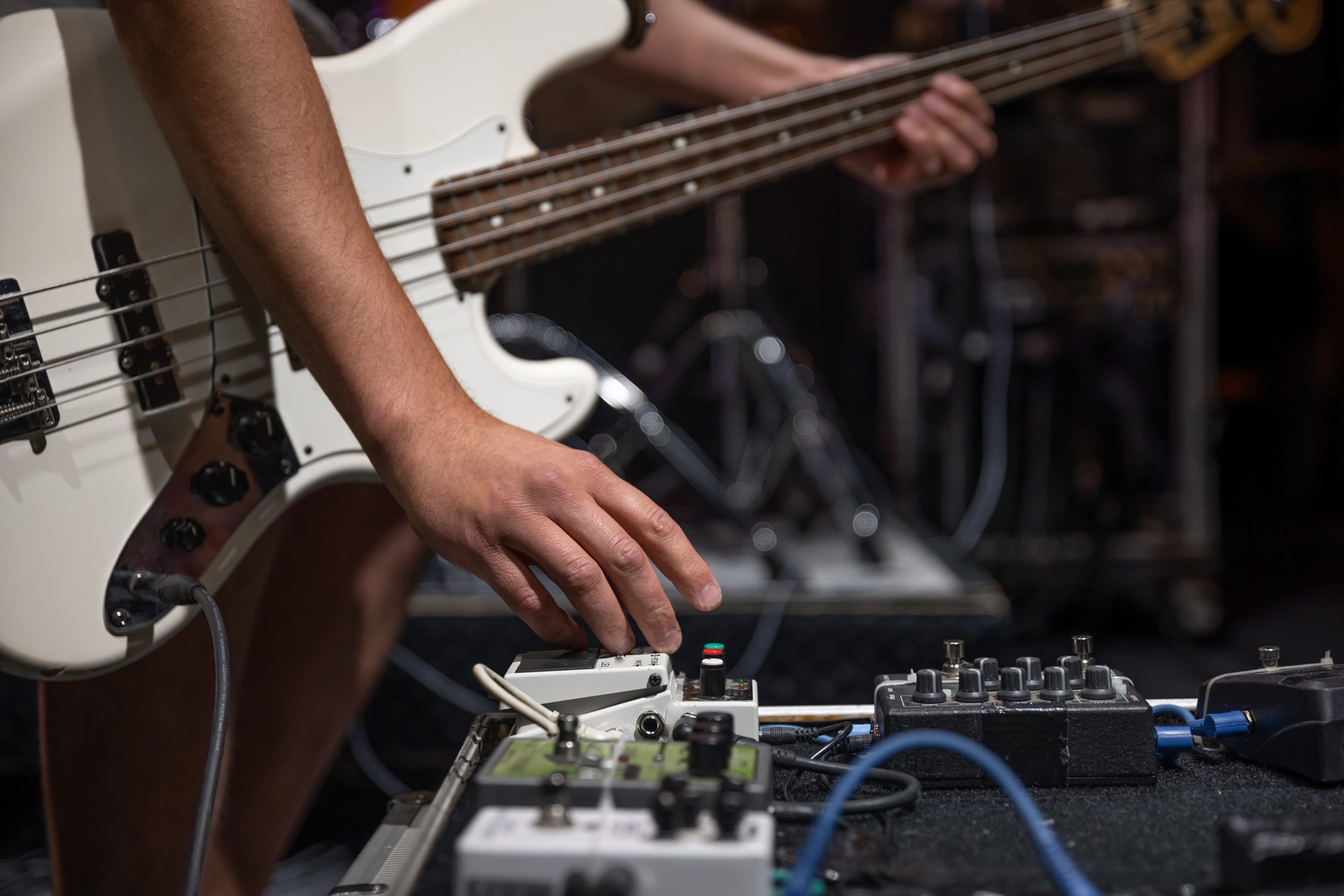KEY TAKEAWAYS
- Daisy chaining is when you connect multiple digital pedals and analog pedals to one another to add variety to your signal chain.
- There is no exact number defining the maximum amount of pedals you can chain together, but connecting a whole bunch can run into issues.
- These issues include muddy sounds, known as tone suck, and signal interference from power supplies, leading to a ground loop and additional noise.
If you are new to guitar effects, you may wonder how many pedals you can daisy chain together. Many of the best guitars, after all, integrate with a vast array of effects pedals, which can be connected together for simultaneous use. So what exactly is daisy chaining, is there a limit to how many of the best guitar pedals you can chain together, and what are some useful tips? Keep reading to find out.
What is Daisy Chaining?
If you are wondering how many guitar pedals are too many, it is time to learn about daisy chaining. This is the process by which you connect multiple pedals to one another, which is possible even if you do not know how to hardwire pedals. You just hook them all up on a pedal board, though be sure to use an isolated power source so you won’t have to learn how to eliminate hum from guitar pedals.
The connections are made via shortened guitar cables, so you won’t have to learn how to restring a guitar to chain pedals together.
How Many Pedals Can Daisy Chain Together?
Theoretically, there are no limits here, but in practice connecting too many pedals together at the same time can run into issues. In other words, there is no number, but there are some things to be on the lookout for.
Muddy Sounds
There is only so much a signal chain can take before the sound turns to unpleasant sludge. The same goes when recording, so imagine layering delay on top of delay with distortion and reverb, along with multiple compression pedals and volume pedals. You could stumble upon a unique and useful tone, but more likely, you will stumble upon just a gross mash of blah, which is typically referred to as tone suck. Less is more, so remove some pedals before adding new ones to fix any sound issues.
Interference and Hum
You run the risk of signal interference when you chain many pedals together, which increases your chances of hum, hissing, or unwanted noise. Minimize your chances of this, even with multiple pedals, by making sure all of the pedals are plugged into the same isolated power supply.
Pedalboard Size
If you are changing together multipole pedals, you may not be able to fit them all on your pedal board and may struggle to find a power source for each pedal.
Daisy Chain FAQs
How do I power multiple guitar pedals?
You need the correct power output and current draw within your daisy chain cable to adequately power your audio signal. This is typically done by using a dedicated power supply with the correct power requirements.
How can I tell if a power supply is isolated or not?
Isolated power supplies are those that are self-contained in an isolated power outlet. Look for language when buying a power supply that indicates an isolated output.
When should I consider daisy chaining?
If you have multiple delay pedals and other types of pedals with differing power requirements, try daisy chaining.
STAT
“With a daisy chain, you can connect multiple pedals to the same output of the power supply.” (source)
TIP: Some pedals are much bigger than others, so take that into consideration when configuring your pedal board.
Sources
https://pedaltown.nl/en/daisy-chain-your-guitar-effect-pedals-do-or-dont
https://www.thegearpage.net/board/index.php?threads/rules-of-daisy-chaining-your-pedals.1842766/
https://www.sweetwater.com/sweetcare/articles/guitar-pedal-power-demystified/
https://en.customboards.fi/pages/how-do-i-split-power-supply-output-for-two-or-more-pedals
























